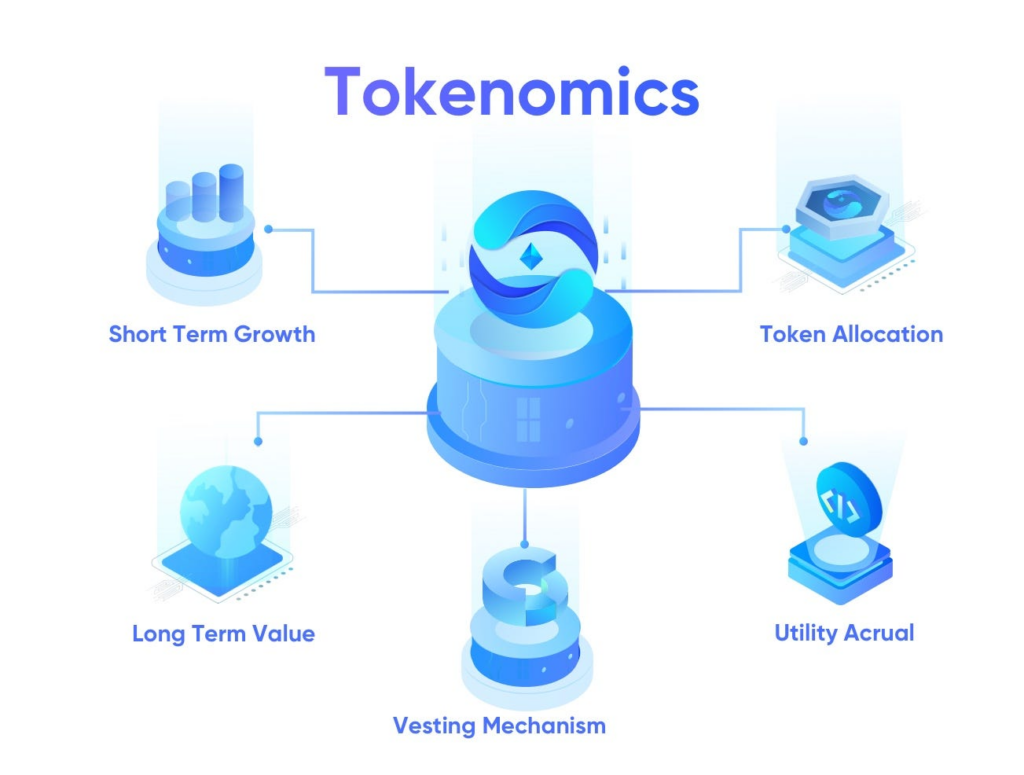Tokenomics may sound like geeky jargon, but at its core, it’s what makes—or breaks—a blockchain project. By combining “token” and “economics,” tokenomics refers to the economic rules that govern crypto tokens: how they’re created, distributed, used, and ultimately valued. For anyone building, investing in, or simply curious about Web3, this framework is essential.
In this in-depth guide, we offer clear insights into tokenomics, explore its key components, discuss real-world examples, and explain why good tokenomics drives blockchain innovation—and poor token design can cripple even the most promising project.
1. Why Tokenomics Matters
Tokenomics isn’t a buzzword—it’s the lifeblood of decentralized ecosystems. A carefully crafted token model helps:
- Influence trust and investor confidence
- Encourage network growth and user participation
- Reward contributors and align stakeholder incentives
- Create sustainable token demand and value
Simply put, tokenomics is the blueprint that ensures tokens don’t just float around—they circulate, empower, and grow the ecosystem.
2. Core Components of Tokenomics
Here are the four building blocks every token model must address:
A. Token Supply & Inflation (or Scarcity)
Will the token have a fixed supply like Bitcoin’s 21 million cap, or will it be inflationary (like early Ethereum)? Scarcity creates value, while inflation can fund ongoing operations and rewards.
- Fixed supply ⇒ deflationary design, valuable if scarce
- Inflationary models ⇒ ongoing token creation funds rewards or development
B. Token Utility
Why does the token exist? It can power governance, payments, staking, access rights, or more. Without utility, tokens risk becoming speculative assets.
- Utility drives demand and real-world usage.
- Examples include governance participation, on-platform credits, or staking mechanisms.
C. Distribution & Vesting
Who gets tokens and when? Mismanaged allocations can lead to dump events and investor distrust. A tiered vesting schedule helps stabilize token flow.
- Hearts: tokens for founders, advisors, investors, community
- Vesting ensures long-term commitment
D. Incentives & Rewards
Beyond mere distribution, tokens often fuel user behavior:
- Liquidity rewards
- Staking yields
- Referral bonuses
- On-chain performance incentives
This dynamic encourages participation—driving active ecosystems.
E. Token Burns
Some tokens remove supply via burns (sending tokens to unrecoverable addresses). Burns increase scarcity and can be tied to usage—like Ethereum’s fee-burning mechanism.
3. Tokenomics Models: What Works and What Doesn’t
3.1 Utility Tokens
Designed to access or pay for platform services. They rise in value with adoption, but need strong use cases to sustain.
Example: A decentralized data marketplace token used for payments, rewarding data providers, and voting on product features.
3.2 Governance Tokens
Underpin DAOs—allowing holders to vote on proposals, treasury spending, or feature upgrades.
Example: A DeFi protocol that issues tokens for governance and distributes them to liquidity providers.
3.3 Hybrid Models
Some tokens blend utility, staking, and governance to foster active, invested communities.
Example: A gaming platform token that buys in-game assets, earns rewards via play, and governs updates.
4. Common Tokenomics Pitfalls

Even experienced teams trip over token design mistakes:
- Too much supply unlocked upfront ⇒ price crashes
- Weak utility or unclear token role ⇒ abandoned token
- Runaway inflation ⇒ devalues token and user trust
- Unbalanced rewards ⇒ drains treasury or encourages bad actors
- Ignoring governance design ⇒ decentralized may mean chaotic
Tokenomics failures have tanked projects even with strong tech or business models.
5. Real-World Case Studies
Bitcoin
- Fixed supply: 21M BTC total
- Halving every ~4 years reduces inflation
- Incentivized mining secures the network
→ Predictable supply drives long-term value.
Ethereum
- Initial inflationary supply funding development
- Fee burning reduces daily supply (EIP-1559)
- Staking rewards incentivize network security
→ Utility in payments and staking increases adoption
Uniswap
- Governance token given to past users
- Rewards liquidity providers only
- No vesting for early participants—led to token dumps
→ Real insight into simple vs. sophisticated token design
6. Aligning Tokenomics with Web3 Vision
Any token should reflect the project’s mission:
- DAO governance? Focus on fairness and participation
- Media & content? Reward creators and audience
- Data ecosystems? Incentives for data sharing and validation (like Presearch) wired.com
The strongest token models embed economic clarity into governance, security, and growth.
7. Evaluating Tokenomics: A Due Diligence Checklist
If you’re assessing a token project, start here:
- Supply model: fixed or inflationary? How is minting controlled?
- Utility: essential demand-driving use cases?
- Distribution: fair splits, transparent vesting?
- Incentives: well-balanced rewards that don’t abuse resources?
- Governance: leaderless or structured voting; feedback processes
- Transparency: sources, token allocations, audits
Great tokenomics often mean long-term value: weak or imbalanced systems cause token value to falter.
8. Tokenomics Trends Shaping the Future
A. veTokenomics (Vote-Escrowed Models)
Lock tokens to gain voting power and rewards (used by Curve, Frax). This model encourages loyalty and commitment.
B. Dynamic Supply
Smart contract rules that adjust burn rates or emissions based on usage metrics or token velocity
C. Layer 2 and Sidechain Economies
New ecosystems with lightweight tokens need fresh tokenomics approaches—often borrowing from mainnet examples
D. Real-world Asset Tokenization
Tokenized real-world assets (like gold or property) demand stable token models and compliance-constrained tokenomics
9. When Good Tokenomics Fail
Even solid token designs can suffer:
- Weak marketing and distribution
- Regulatory scrutiny over token classification
- Tech issues (e.g., security vulnerabilities)
- Poor community trust or communication
Tokenomics can keep a project afloat—but only if execution matches the model.
10. Tokenomics Explained: Why It Matters to You
Whether you’re a developer, investor, or simply exploring Web3, understanding tokenomics empowers you to:
- Build tokens that foster adoption and stability
- Identify red flags in token models during your evaluation
- Stay ahead as blockchain tech evolves via scalable token systems
Strong tokenomics are the unseen engine that powers trusted, sustainable projects.
For further reading on the economic logic behind Web3 systems, check out our deep-dive into tokenomics explained or explore the latest AI/Tech Press Releases to see token models shaping real-world protocols.
